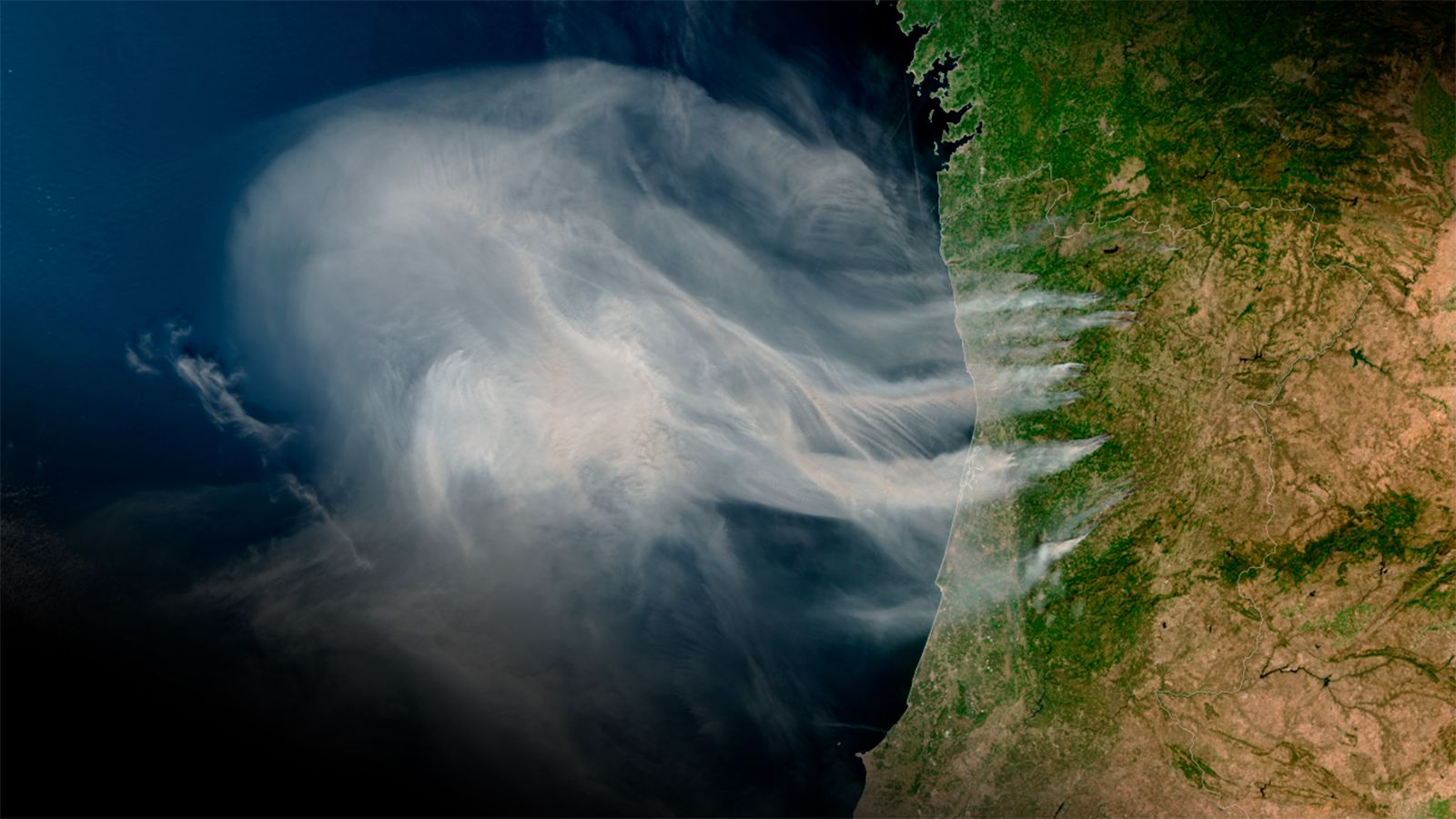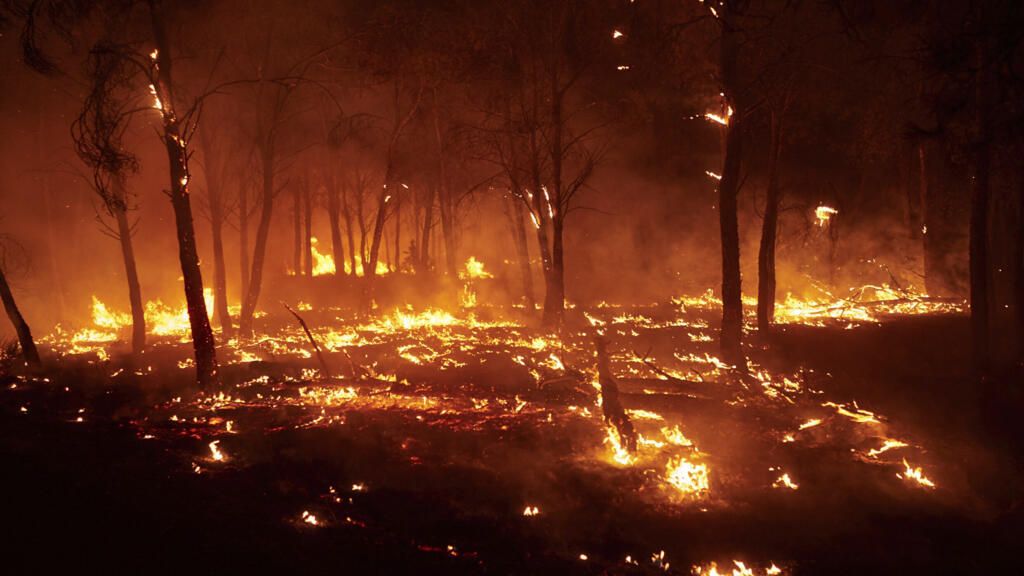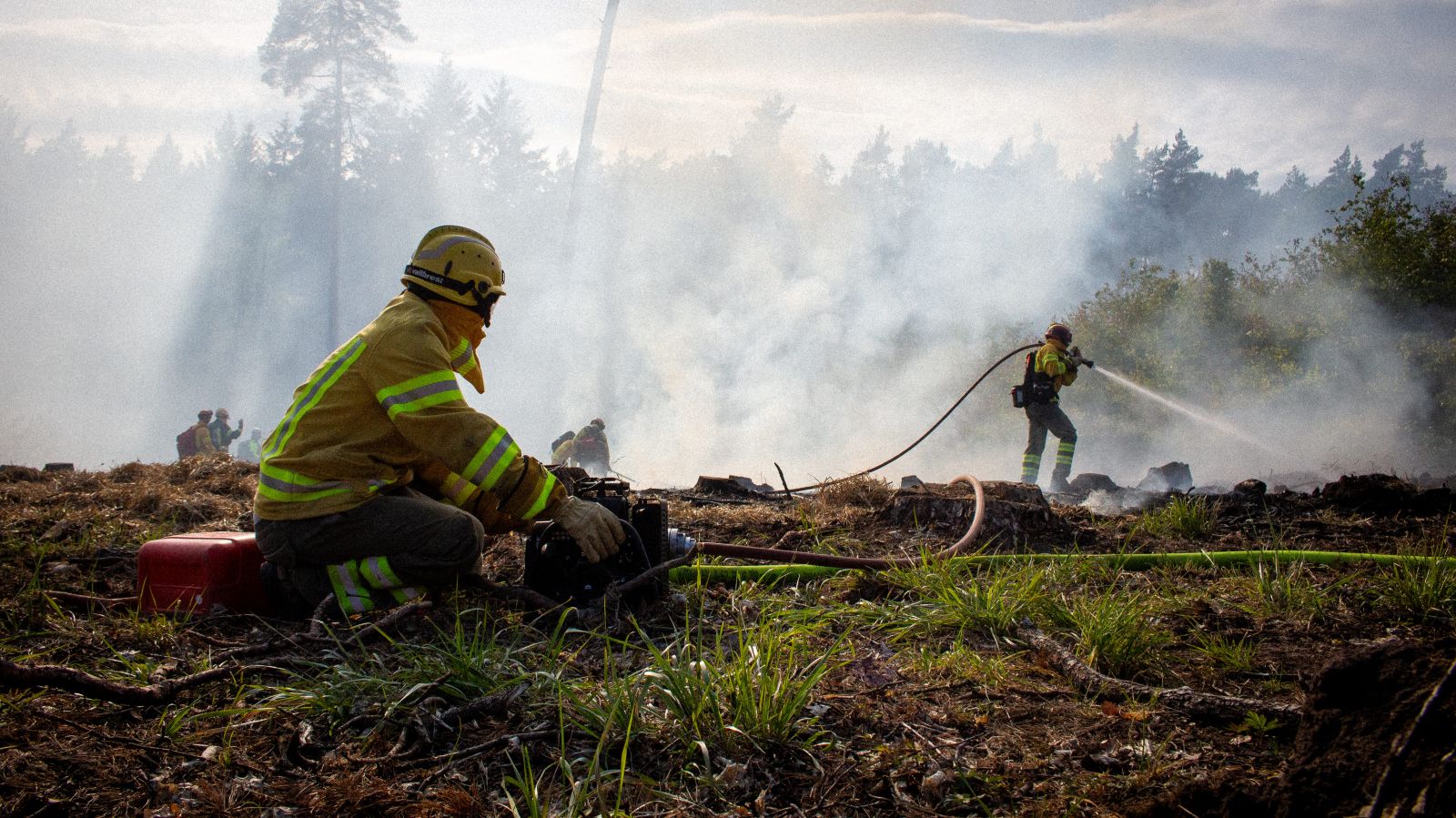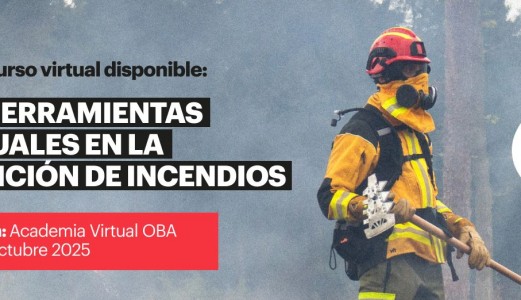Summer 2025 is putting Europe’s wildfire resilience to the test. From the Iberian Peninsula to the Aegean coast, vast territories are burning under exceptional weather conditions. This is not just another difficult season—it is a fire environment shaped by extreme heat, record dryness, and volatile winds, producing behaviours that many firefighting crews have rarely experienced. For those on the frontline, it means adapting tactics, sharpening operational priorities, and rethinking how we prepare for the decades ahead.
The Heatwave Driving the Fires
Meteorologists describe the current heatwave as one of the most intense and prolonged in European history.
It is the result of a persistent high-pressure ridge—a heat dome—trapping warm air over southern and central Europe. This has produced:
- Extreme daytime temperatures: Reaching 46 °C in Portugal, 44 °C in southern Spain, and over 40 °C in southern France, Italy, and Greece.
- Tropical nights: Minimums staying above 25 °C, preventing vegetation from recovering moisture.
- Large-scale atmospheric stability: Suppressing cloud formation and rainfall for weeks.
Low Humidity
Large areas of southern Spain, inland Portugal, southern Italy, and the Aegean islands have recorded single-digit relative humidity during the hottest hours of the day—below 10% in regions such as Extremadura (Spain), Alentejo (Portugal) and Attica (Greece). Such levels mean that fine fuels—dry grasses, twigs—ignite almost instantly from embers or sparks.
Persistent Winds
Strong, region-specific winds have added to the danger:
- Tramontane (southern France and northeast Spain)
- Mistral (southern France into the western Mediterranean)
- Etesians/Meltemi (Aegean region of Greece and Turkey)
These winds not only fan flames but can abruptly change direction, complicating suppression efforts.
Spain at the Centre of the Crisis
Spain has been among the hardest-hit countries, with multiple regions facing high-intensity fires.
- Castile and León – Las Médulas: Fire whirls—rotating columns of flame—have driven rapid, erratic spread. Hundreds evacuated, homes lost, and cultural assets threatened.
- Torrefeta i Florejacs (Lleida): A fire influenced by the passage of a storm front changed its propagation axis and accelerated to speeds above 20 km/h—forcing tactical repositioning and urgent aerial support.
- Post-spring vegetation growth: Following an unusually wet spring, much of Spain saw abundant grass growth. Now fully cured, these fine fuels are carrying fire across areas previously considered low-risk, connecting patches of heavier vegetation and enabling fast-moving surface fires.
Simultaneity of incidents: Several large fires have burned simultaneously across regions, with some crossing administrative borders (e.g., Galicia–northern Portugal), stressing coordination capacity and resource allocation.
A Continental Crisis
The crisis is far from limited to Spain:
- France – Aude department: The largest fire in decades, with fatalities, injuries, and thousands evacuated.
- Portugal – Northern districts: Multiple rural-urban interface fires, with rapid spread due to cured pastures and eucalyptus plantations.
- Greece – Rhodes, Attica, and Evia: Thousands evacuated from coastal towns and resorts.
- Turkey – Aegean coast: A major wildfire claimed the lives of 10 firefighters, highlighting the human cost of extreme incidents.
- Italy – Sicily and Sardinia: Airport closures, infrastructure damage, and thousands of hectares lost.
- United Kingdom – England and Scotland: Grass and moorland fires testing brigades more accustomed to structural firefighting.
All within the summer of 2025—a synchronised, continent-wide challenge.
How Climate Change is Reshaping Fire Behaviour
Not every fire this summer has been a sixth-generation event, but several key trends are clear:
- Fires are spreading at higher speeds under extreme weather.
- More people live in the wildland–urban interface, increasing ignition risks and suppression complexity.
- Many agencies remain under-prepared in operational knowledge—with access to vehicles and aircraft, but without clear prioritisation strategies or advanced decision-support tools.
This combination—fast-moving fires, high exposure, and inconsistent strategy—makes suppression harder and amplifies losses.
Extinction in a New Era
This new era does not replace traditional tools; it enhances them with advanced capabilities. Hand tools, hose lays, and manual lines remain essential—but must be supported by:
- Improved water availability in remote areas: Portable tanks, aerial-refill points, and long-distance pumping solutions.
- Rapid-deploy pumping units capable of delivering both volume and pressure over steep terrain.
- Real-time intelligence from drones and satellites to anticipate spread and adjust tactics dynamically.
These measures extend endurance in remote zones, reduce turnaround times, and increase safety margins.
Conclusion
The fires of 2025 are not an anomaly—they continue a pattern observed in 2021 and 2022. Each year, fuel loads accumulate, drought deepens, and extreme weather stretches over larger territories. The result: more frequent, more severe, and more widespread fires.
This is no longer a warning—it is our operational reality. Responding effectively demands constant tactical evolution, targeted training, and investment in equipment built for the conditions firefighters face today and will face even more often tomorrow.








